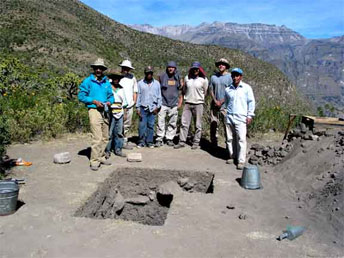Evidence of early corn cultivation uncovered in Peru
Agricultural trade thrived thousands of years ago
Rhett Butler, mongabay.com
March 7, 2006
Maize, better known as corn in some parts of the world, was cultivated by people living in the Peruvian Andes of South America about 1,000 years earlier than previously believed reported a team of researchers last week.
Archaeologists from the Smithsonian National Museum of Natural History, the University of Maine, Orono, the Smithsonian Tropical Research Institute, along with Ithaca College in the U.S. and the Museo Contisuyo, Moquegua and the Instituto Nacional de Cultura, Alameda, in Peru excavated a stone house at Waynuna, north of Arequipa on the western slope of the Andes and analyzed plant remains from three grinding stones. They uncovered maize starch grains from Mexico and Arrowroot starch grains from the lowland Amazon rainforest—evidence that ancient Andean populations actively traded foodstuffs from distant lands. The discovery of maize at the Waynuna house sets back the date of maize cultivation and processing in the region by 1000 years.
Researchers have long known that Andean cultures have cultivated a number of important food crops for thousands of years and consider the region one of the centers of origin for food production. The Inca were famous for their many varieties of potatoes, bred to thrive in different climates and elevations. Eventually potatoes, like maize from Mexico, became a key food source for populations around the globe.
 The excavation at Waynuna. Courtesy of Daniel Sandweiss, University of Maine. |
Maize is the third most produced grain or cereal crop in the world after wheat and rice. It was first domesticated from Teosinte, a wild ancestor from Mexico’s tropical Balsas river valley, some 9000 years ago and its cultivation quickly spread through the Americas and even—though trade networks—reached Asia before Columbus first set foot in the New World.
Smithsonian researchers say that the use of multiproxy microfossil analysis of starch grains in future excavations is expected to yield a better understanding of the domestication and trade of peanuts, manioc and achira, other staples of early Andean cultures.
The Smithsonian Tropical Research Institute provided background information used in this article.